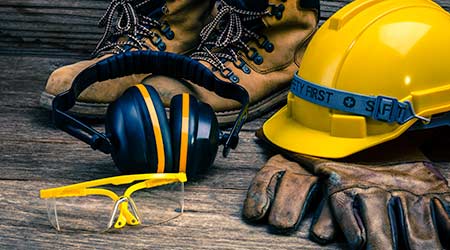Avoiding Flooring Hazards and Complying with OSHA
Identifying and addressing a host of potential hazards, including flooring, that can bring OSHA inspectors into facilities
Maintenance and engineering managers place a high priority on regulatory compliance and worker safety. But the tasks technicians perform daily in institutional and commercial facilities present hazards, and despite managers’ best-laid plans, accidents happen, workers are injured, and the Occupational Safety and Health Administration (OSHA) steps in.
OSHA requires that managers furnish “a place of employment which is free from recognized hazards that are causing or are likely to cause death or serious physical harm to his employees.” This requirement means employers must identify and address workplace hazards, including hazards that workers encounter in a manner capable of causing injury or impairment in the function of any part of the body through absorption, inhalation or physical contact. Workplace hazards include those associated with processes, environments, chemical hazards, radiological hazards, and mechanical irritants.
Focus on flooring
Managers tend to overlook potential hazard that flooring represents, even though every employee, occupant and visitor comes in contact with it.
Aesthetics are a key factor in selecting the type of interior flooring managers should specify for installation, but a priority for managers should be determining not only the type of flooring that will be aesthetically pleasing but that will provide adequate protection from slips and falls. Carpet, ceramic tile, vinyl and hardwood surfaces are appropriate types of interior floor surfaces, but one flooring type might be more appropriate than others for certain areas of the facility, due to design characteristics.
OSHA regulates walking and working surfaces under standard 1910.22. In general, floors should be as free as practicable from recognized hazards. The basic categories of flooring-related hazards addressed by OSHA include:
- Clean, orderly and sanitary conditions.
- Dry surfaces. Where moisture is present, workers must ensure proper drainage and provide clean standing areas, including raised floors, platforms, and mats.
- Free of hazards, such as sharp or protruding objects, loose boards, corrosion, leaks, spills, snow, and ice.
- Regular inspections for hazards.
The National Institute of Occupational Safety and Health (NIOSH) published a report on common slips, trips and fall hazards. Among the most common flooring hazards are these:
- holes, cracks, or bumps in floor tiles, linoleum and other types of flooring
- buckled, loose, or frayed carpeting or curled carpet edges
- greasy or slippery floors
- water, grease, oil, cleaning solutions, coffee, body fluids or other liquid contaminants
- powder, sawdust, dirt, food or other dry contaminants
- sudden changes in floor elevation of more than ¼ inch
- metal grates or mesh flooring in the walkway
- lack of water-absorbent walk-off mats in entrances
- lack of slip-resistant mats in wet areas.
Every floor surface has a degree of traction or slip resistance. Carpeting has the best slip resistance rating, but crews need to keep it clean and free from holes, rips and tears. OSHA recommends that walking surfaces have a slip resistance static coefficient of friction of 0.5.
Related Topics:














